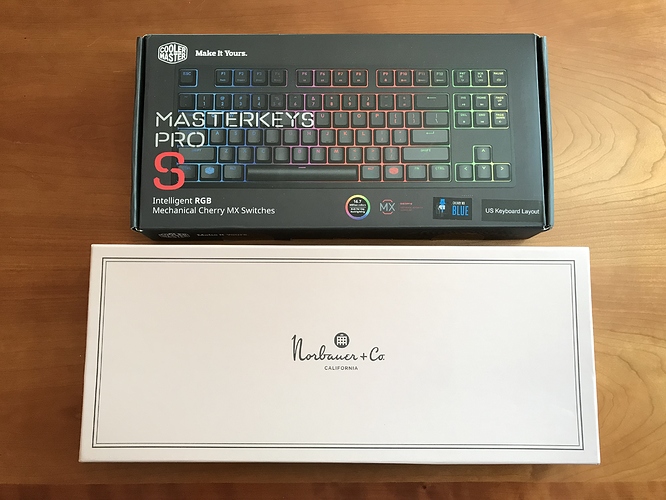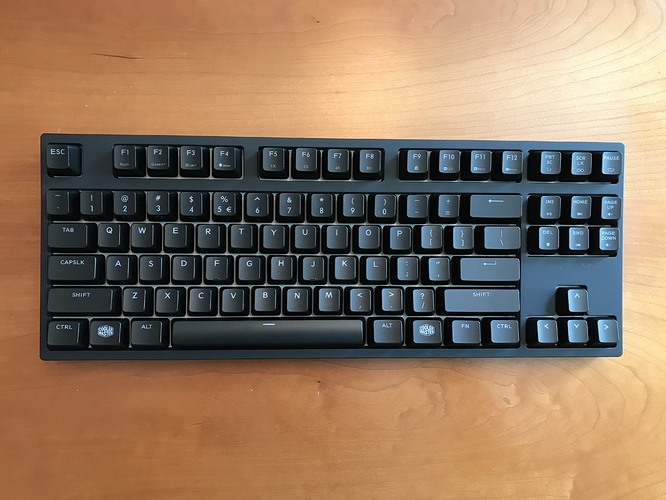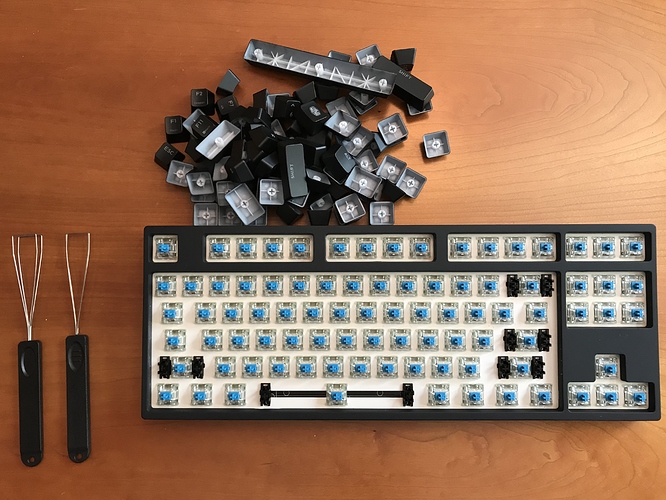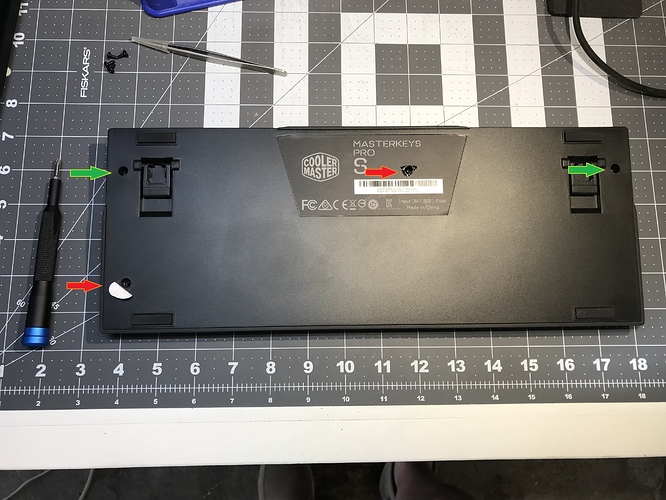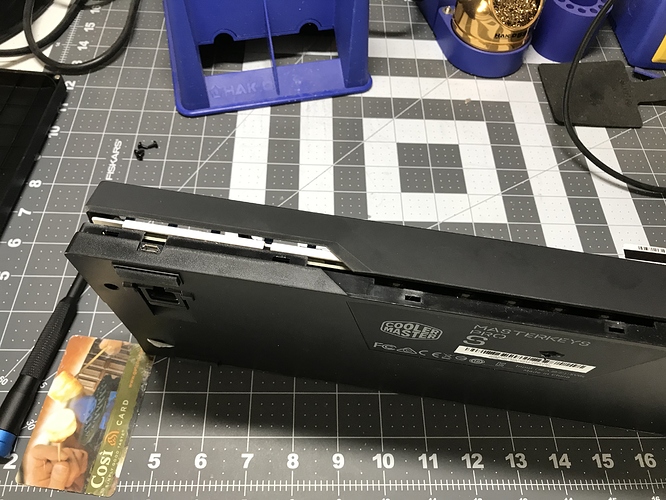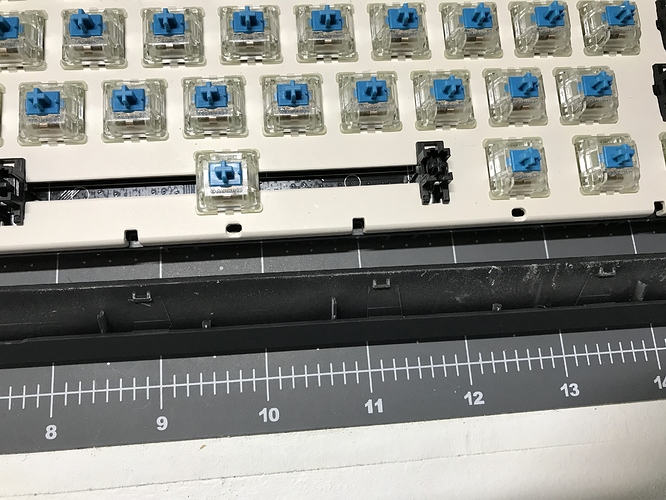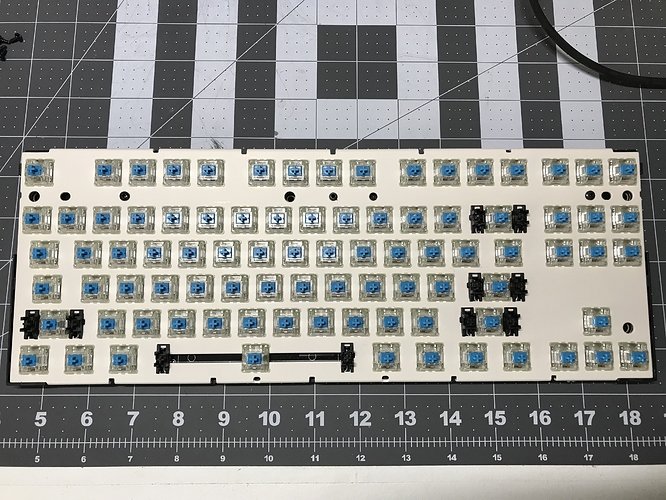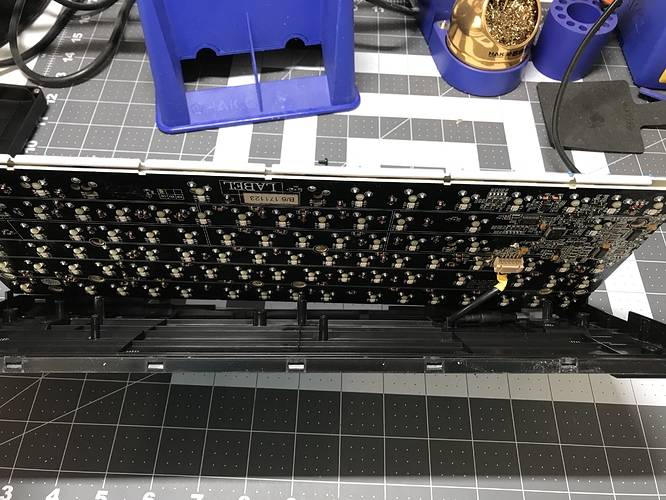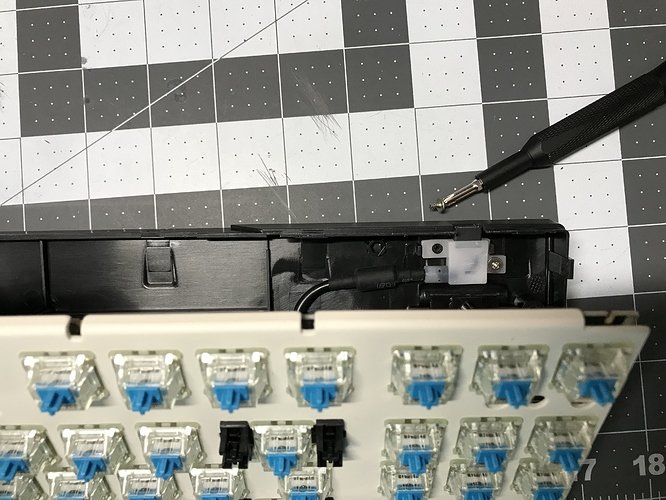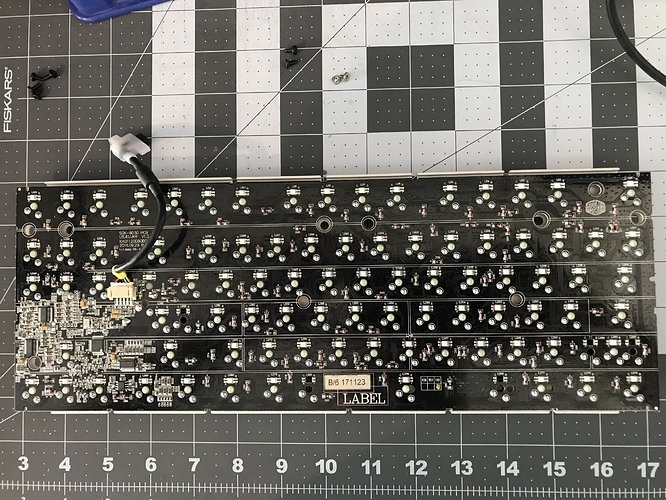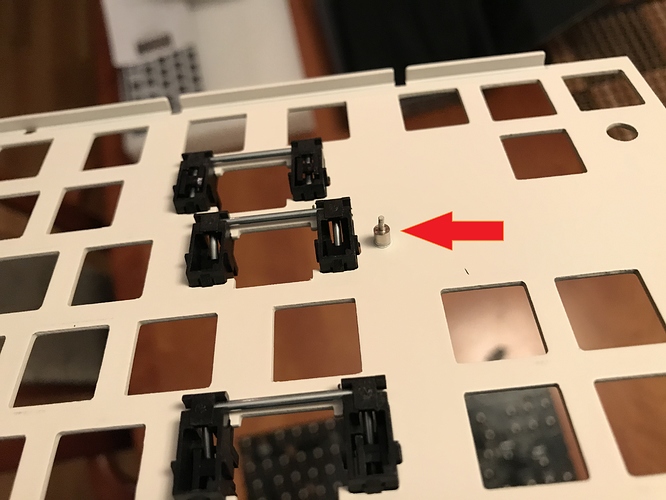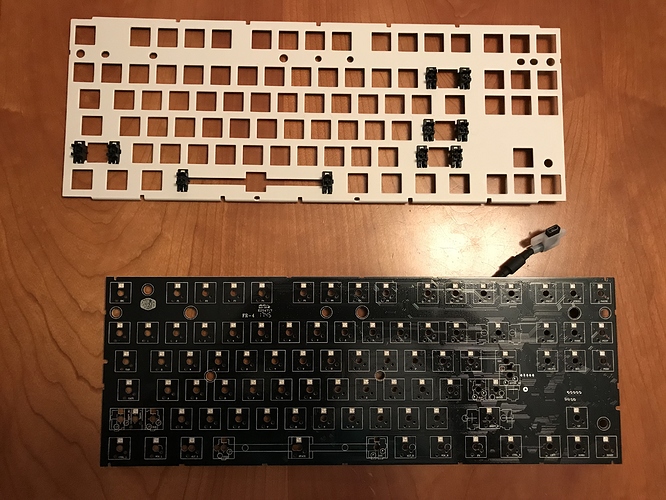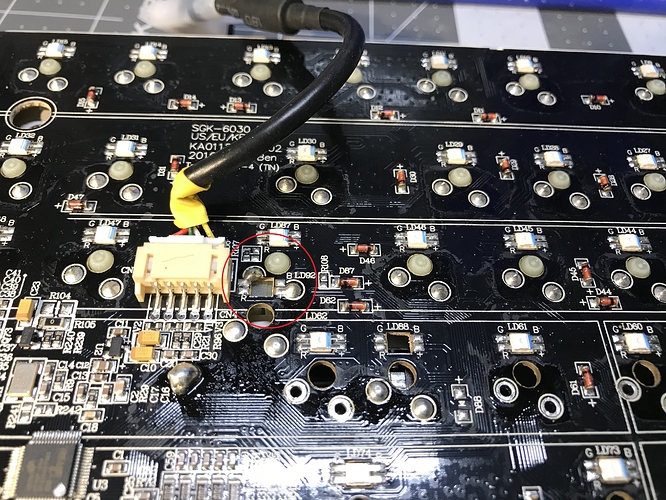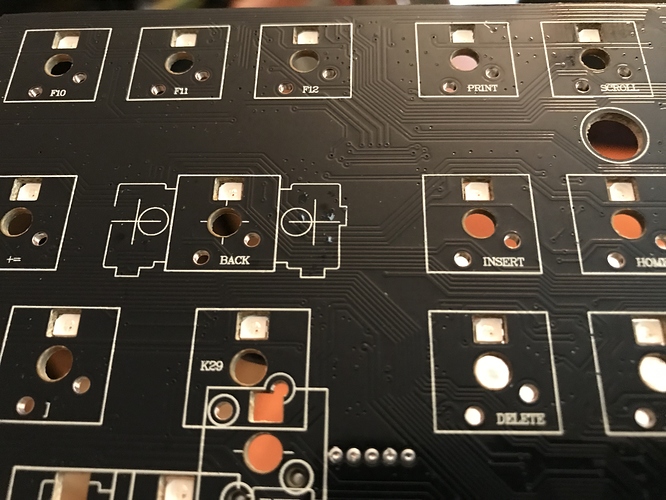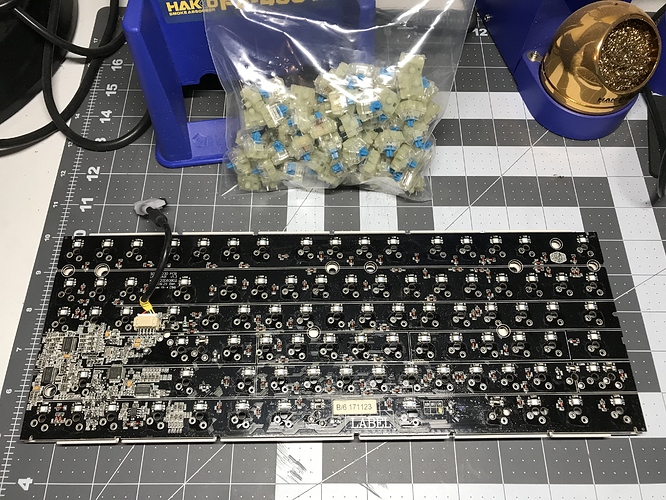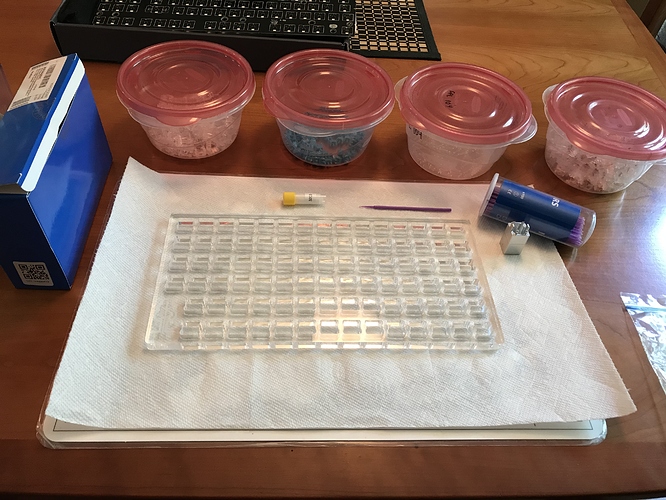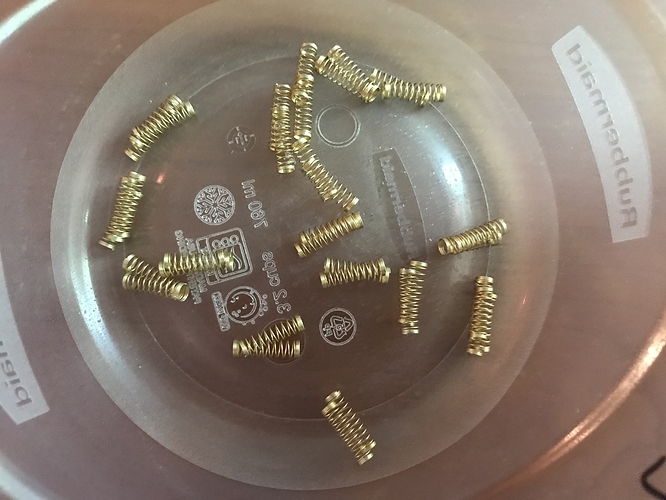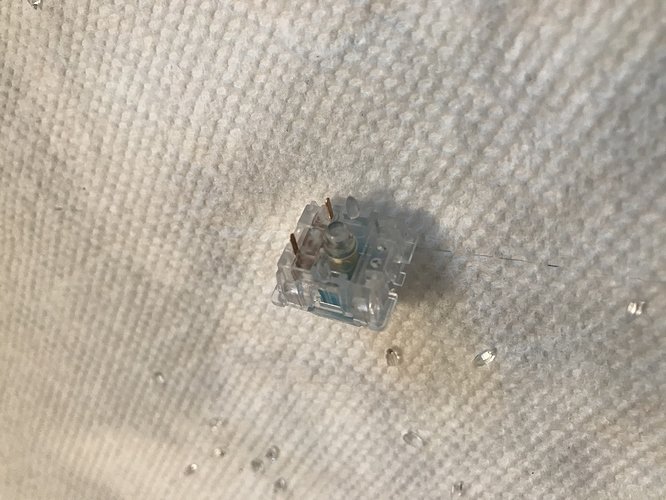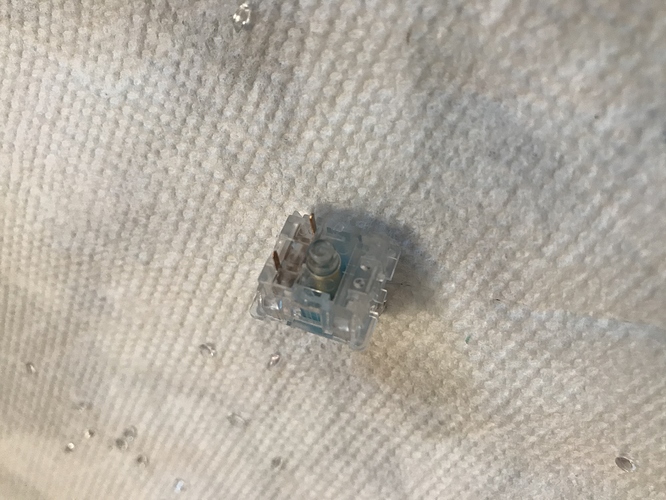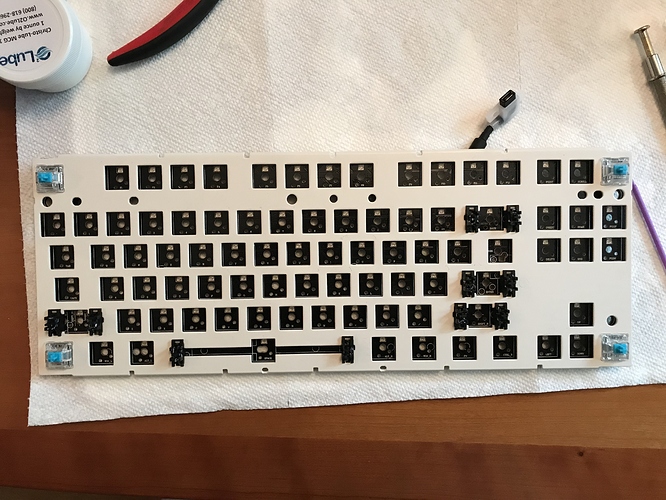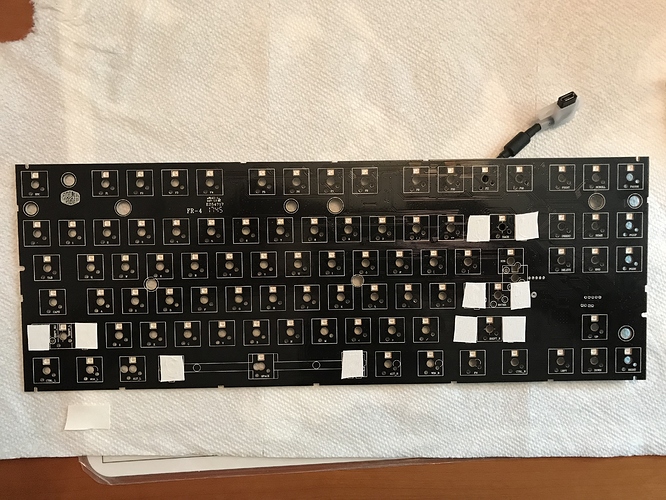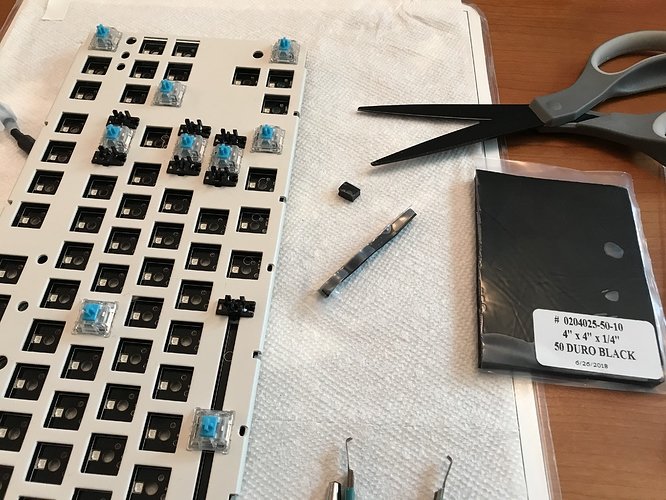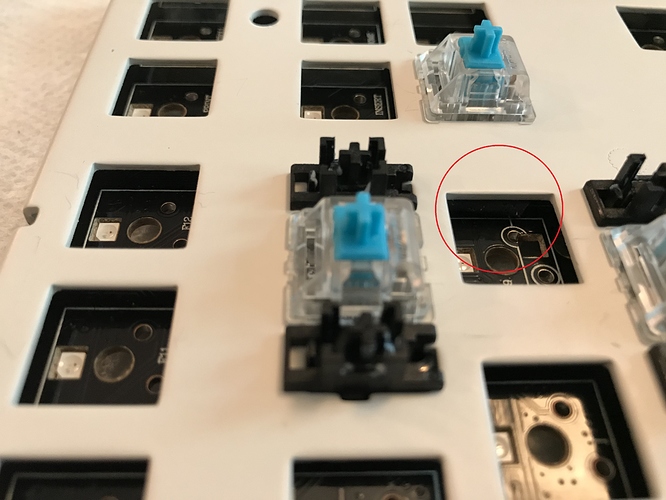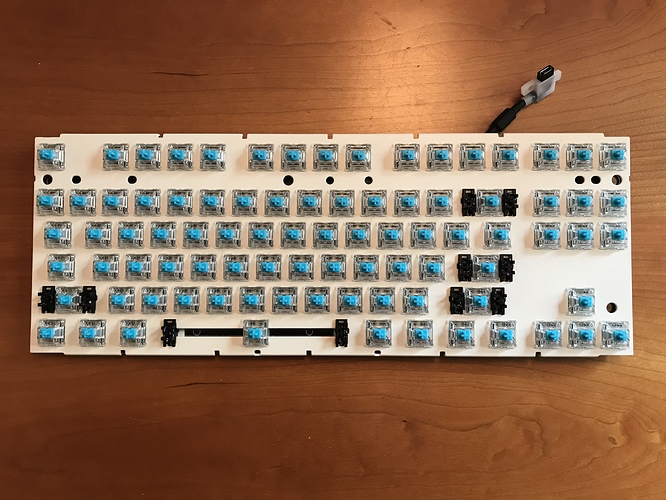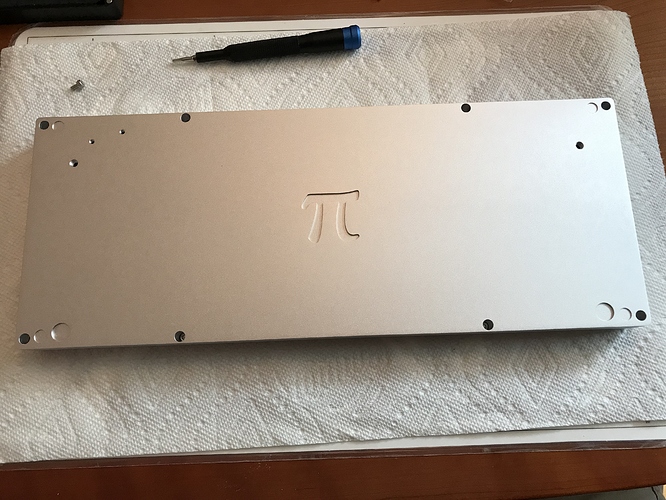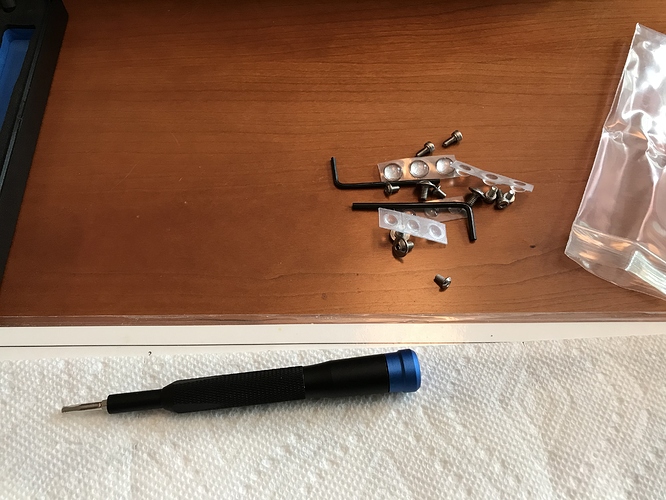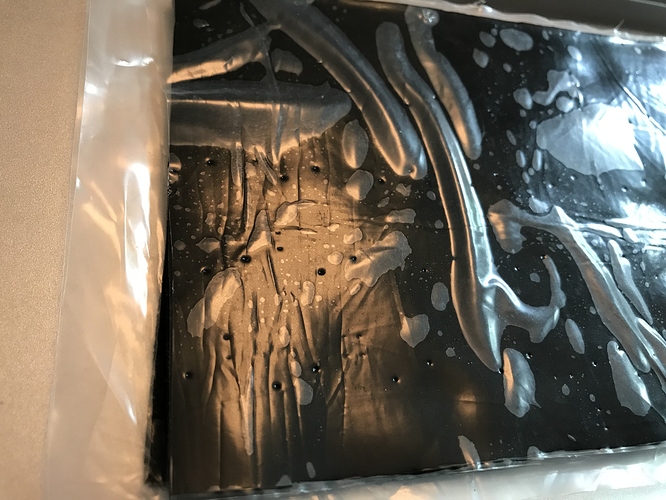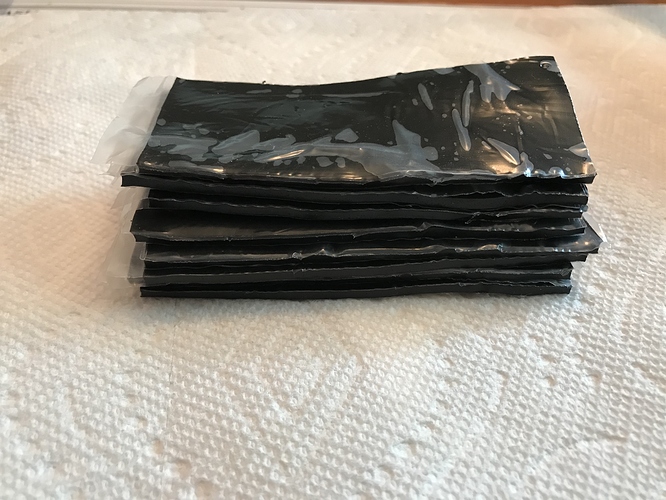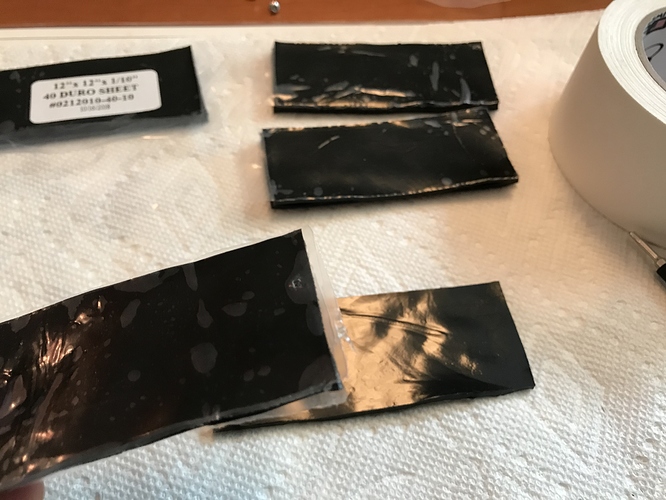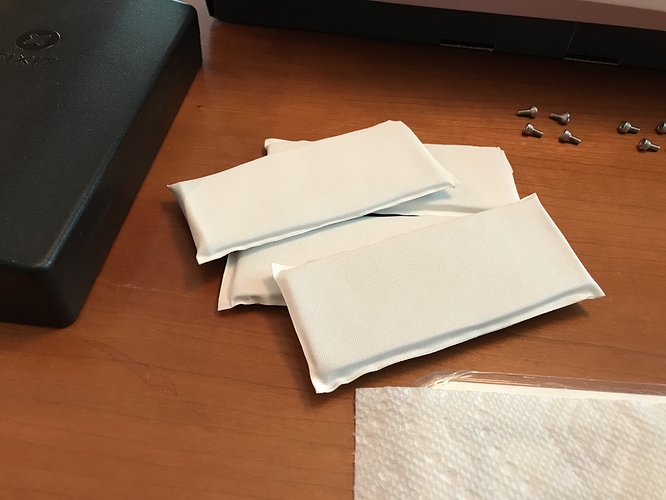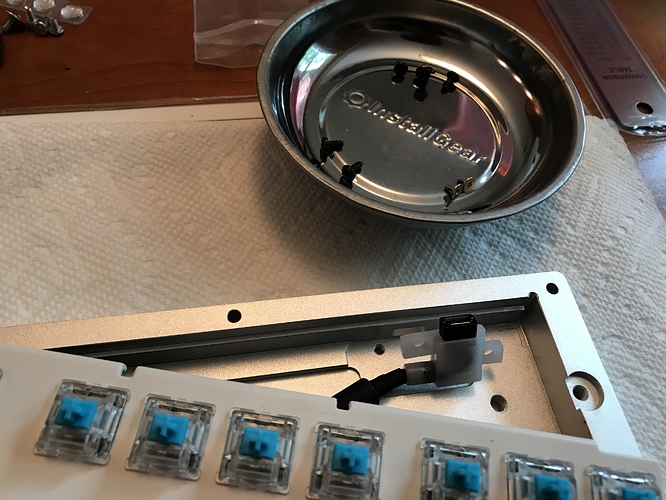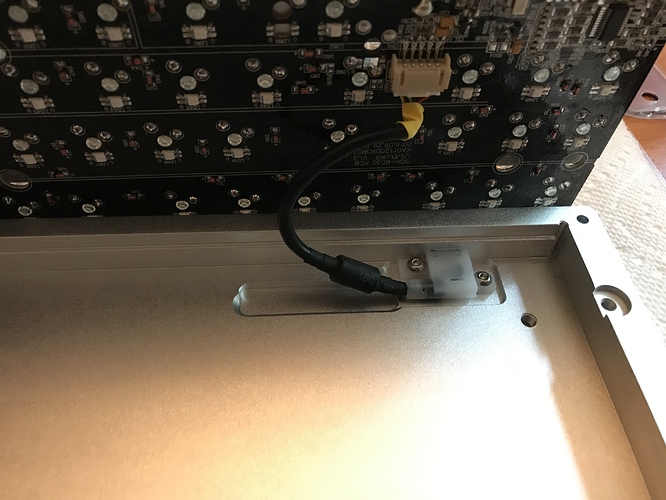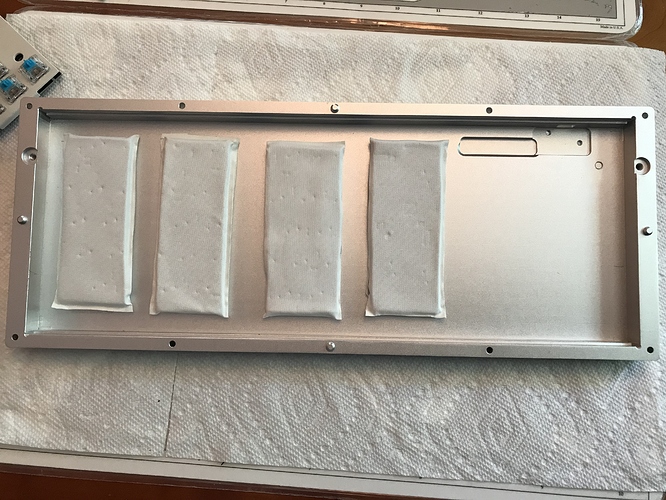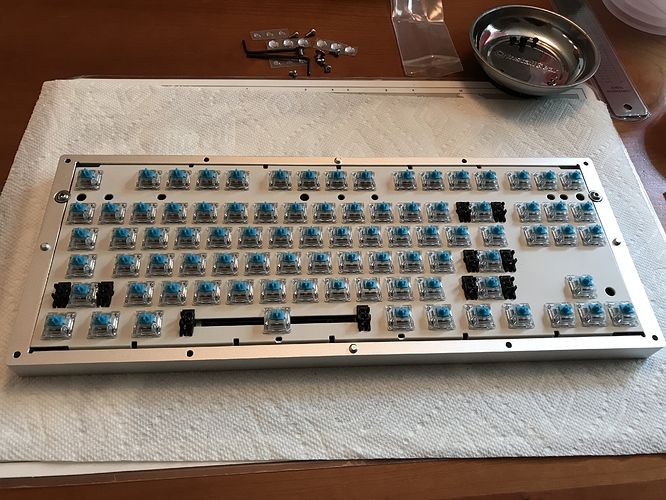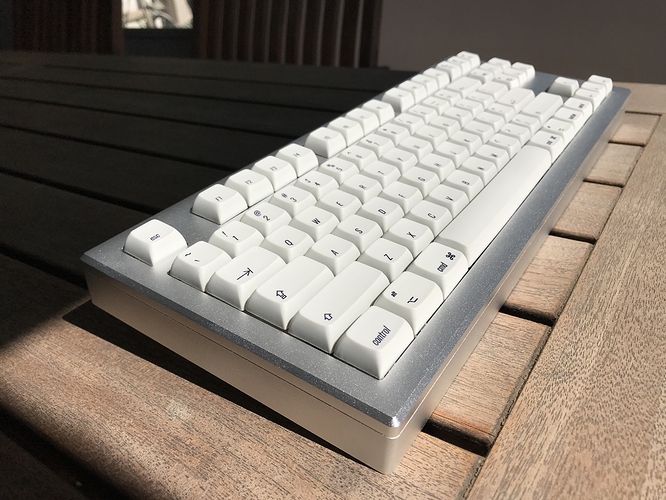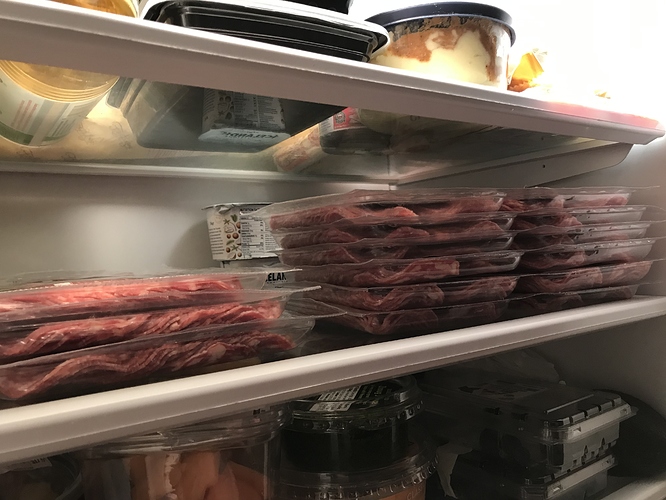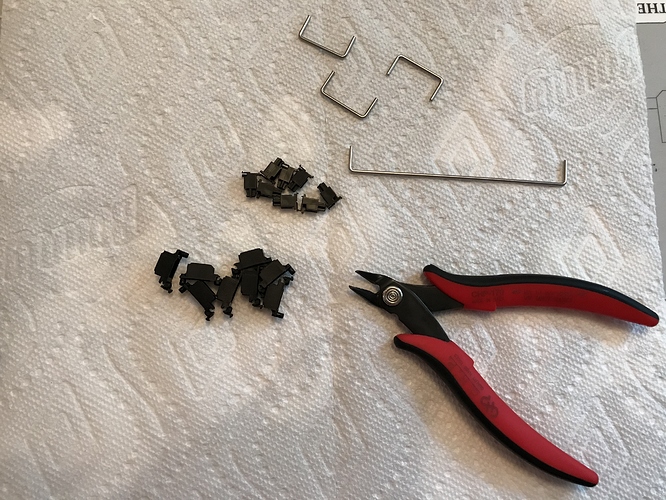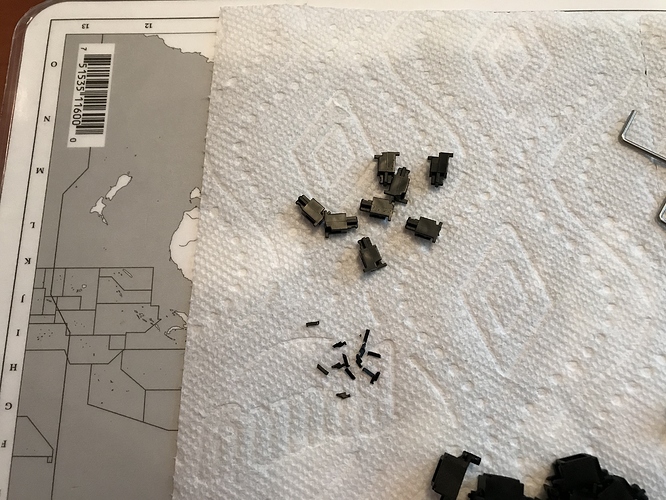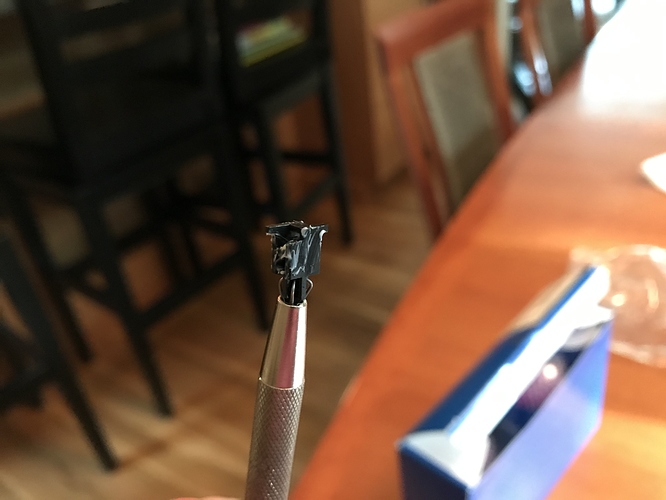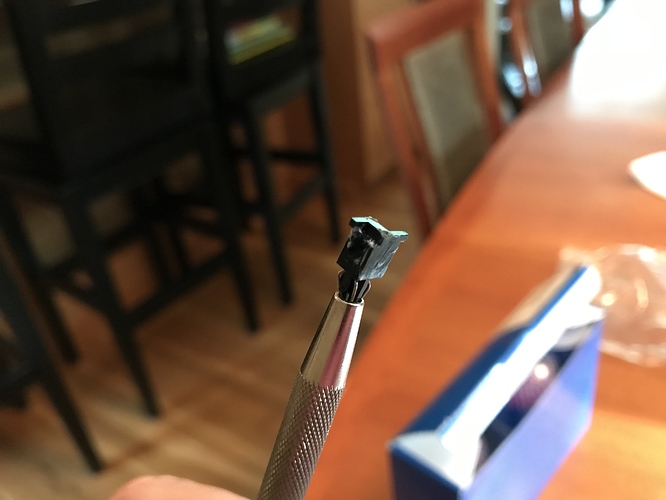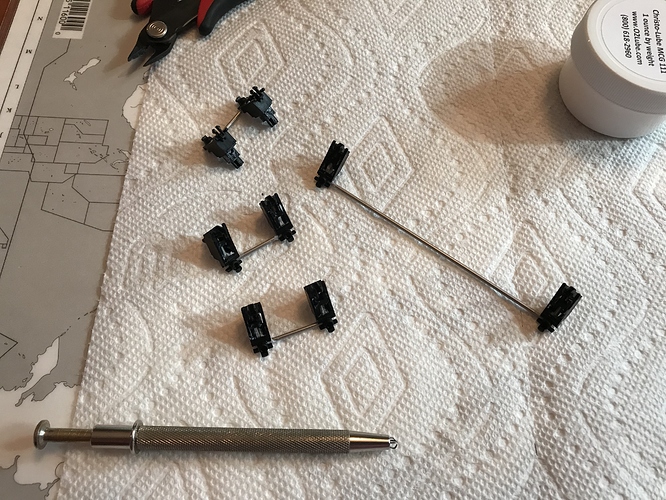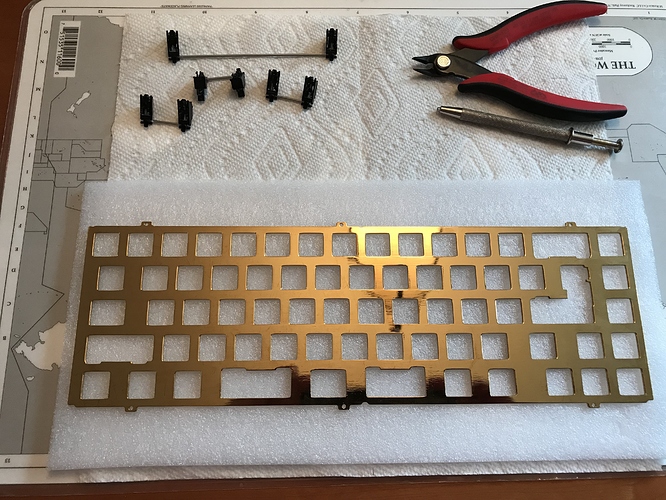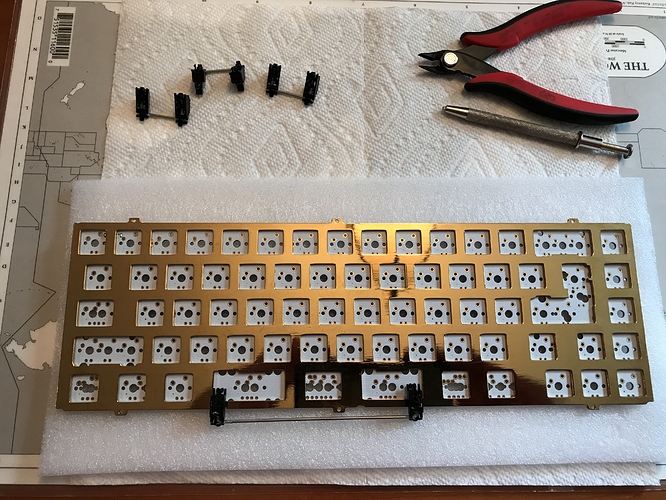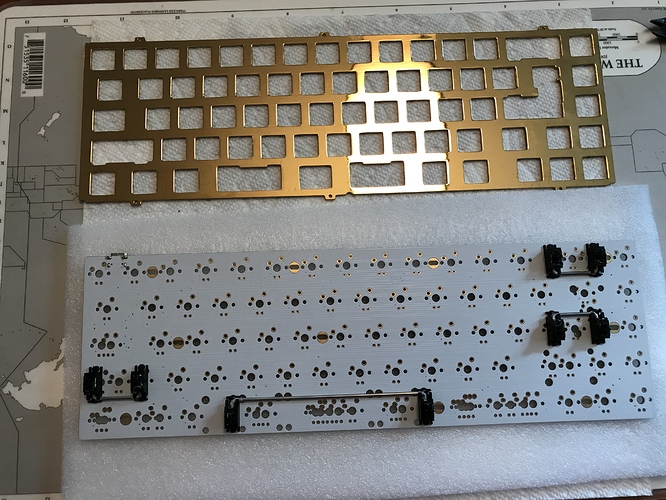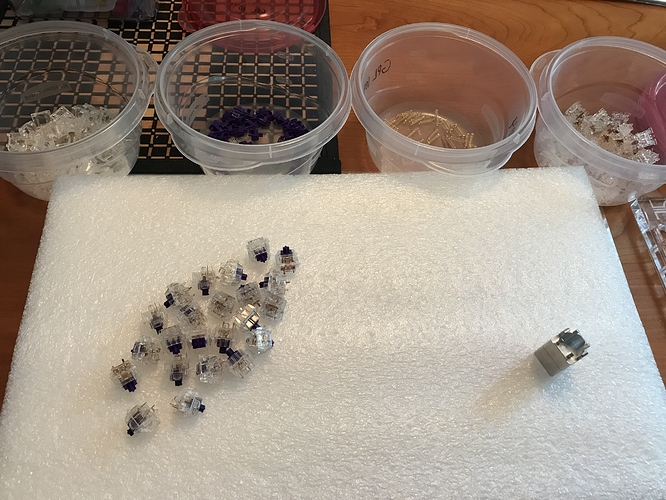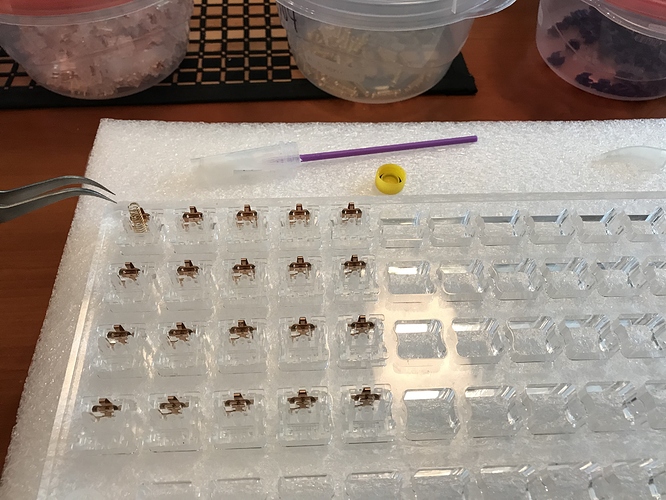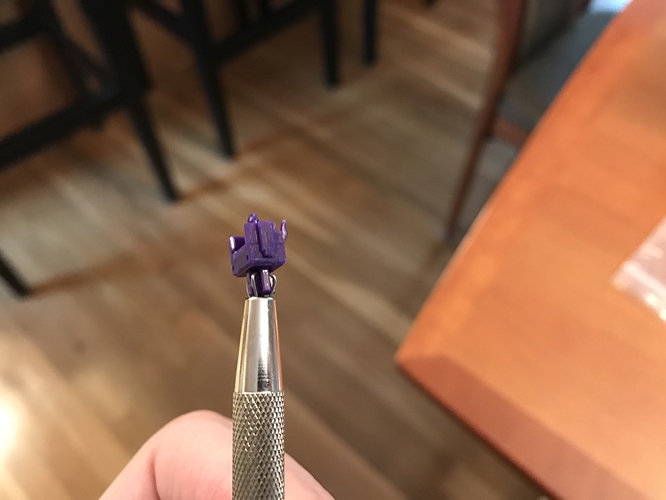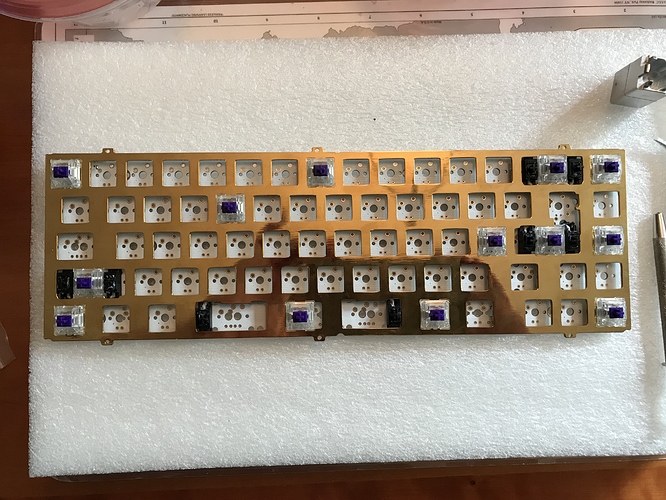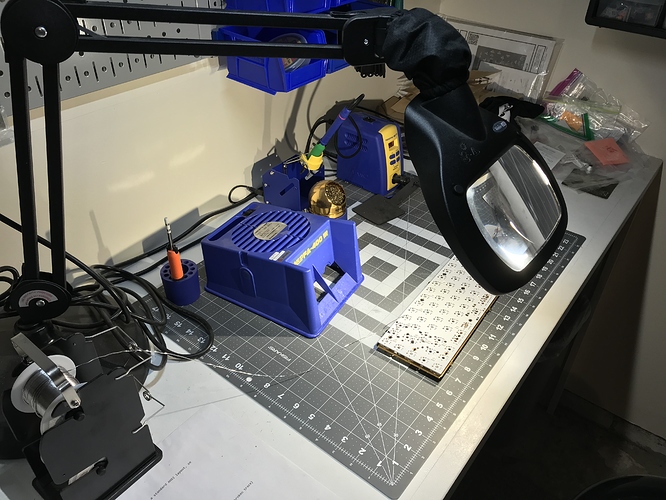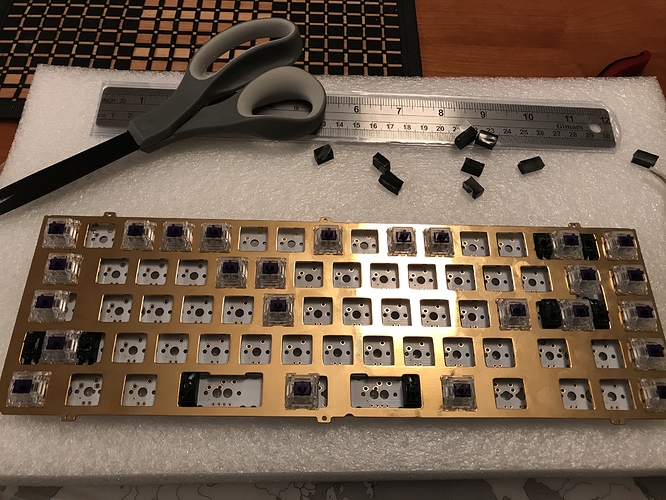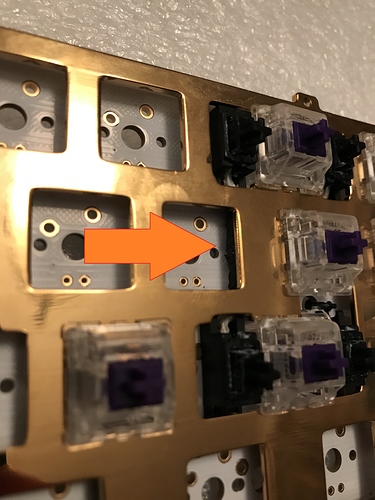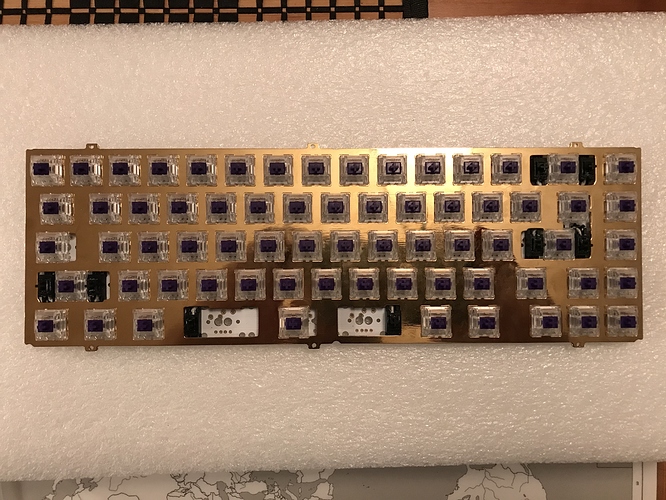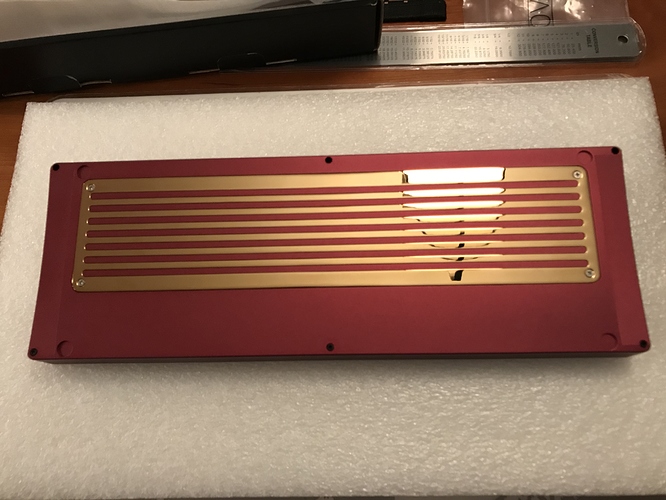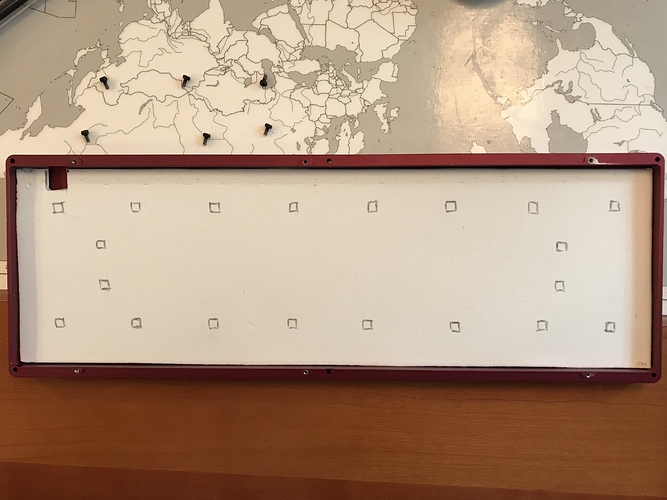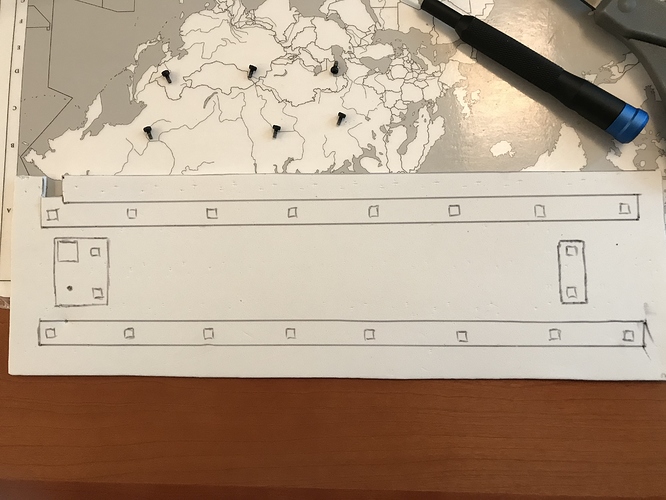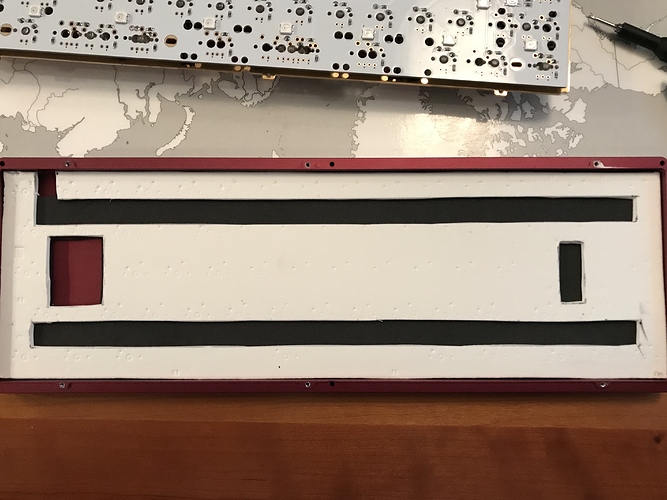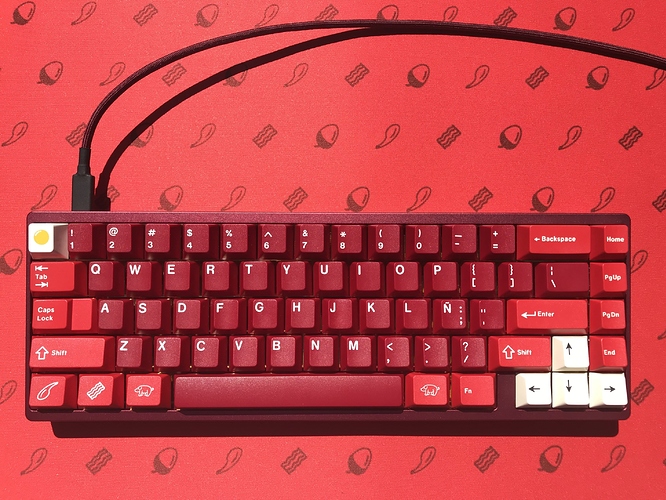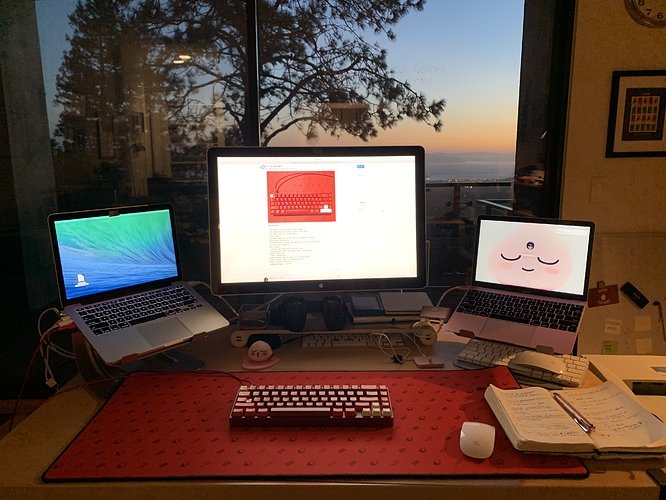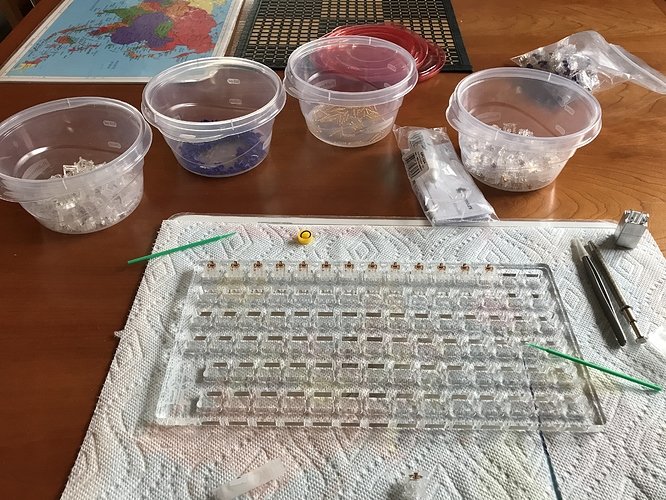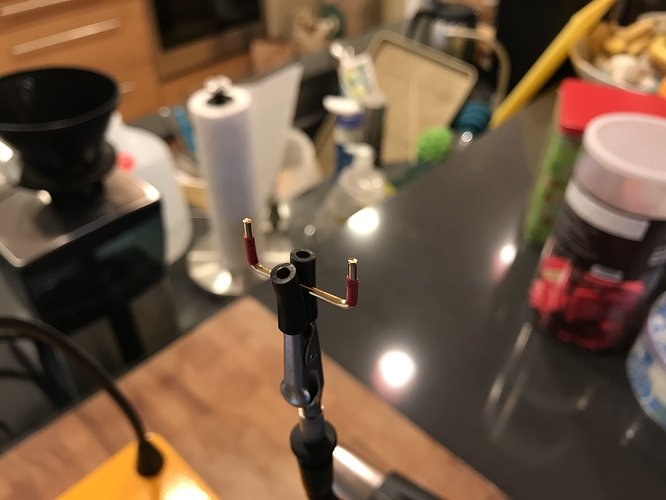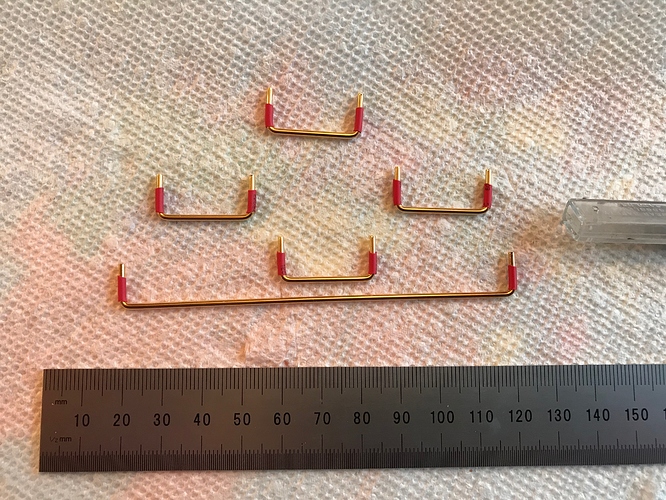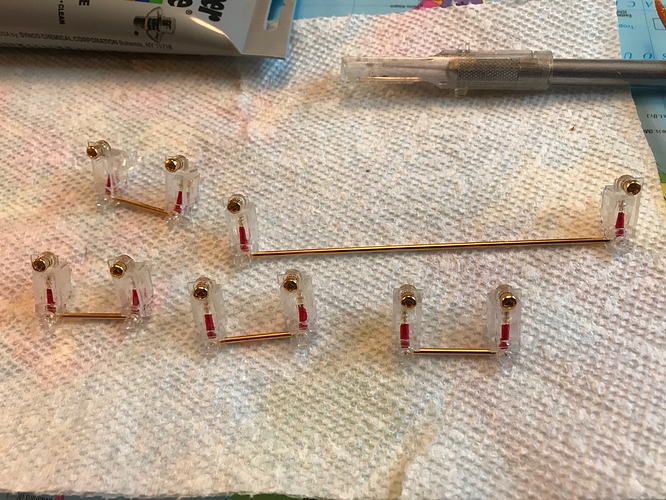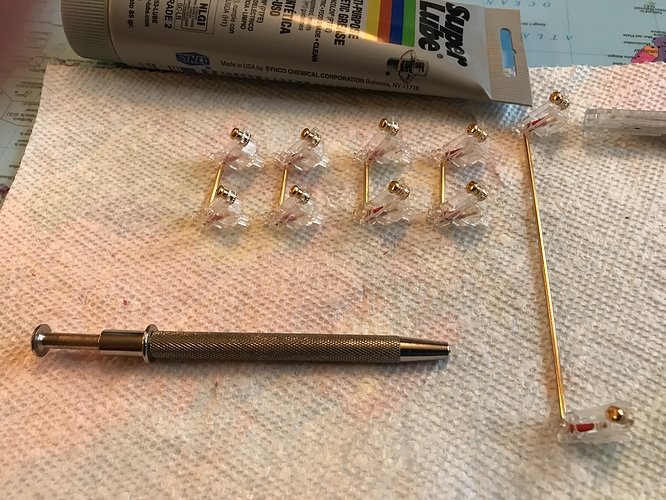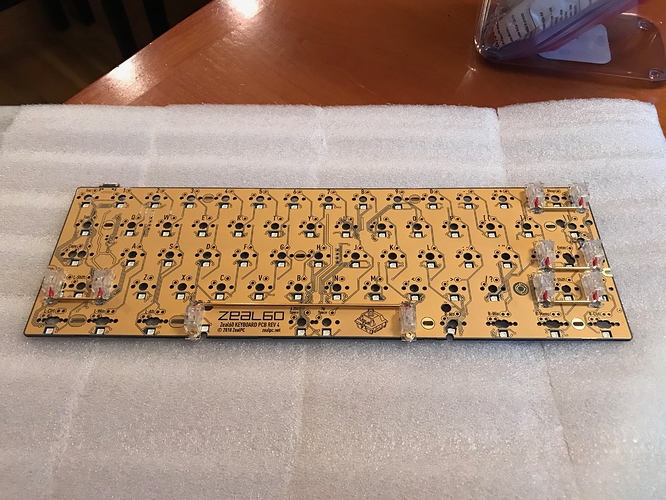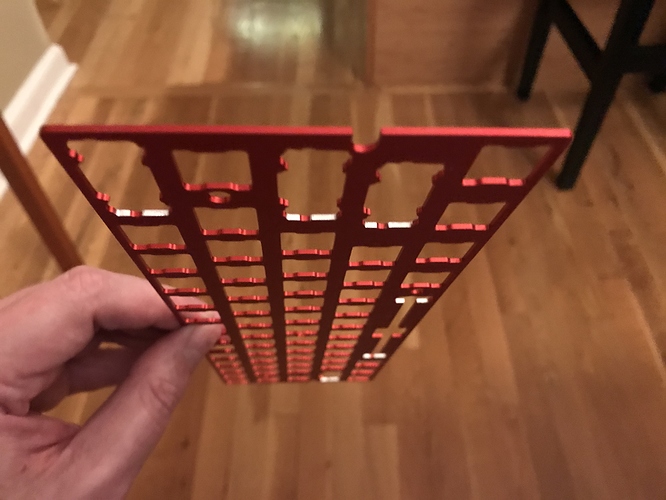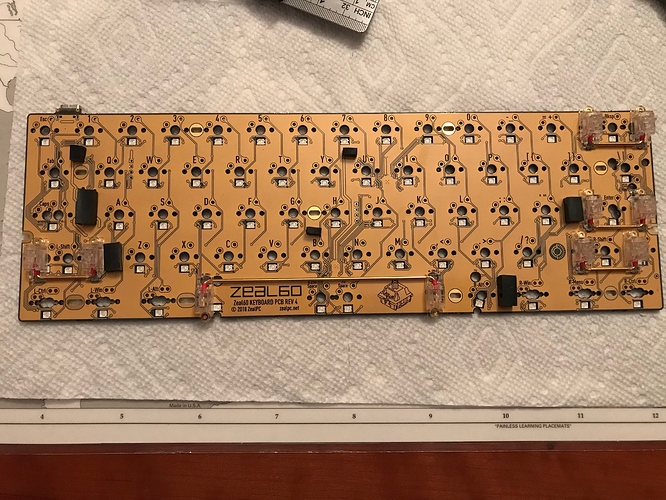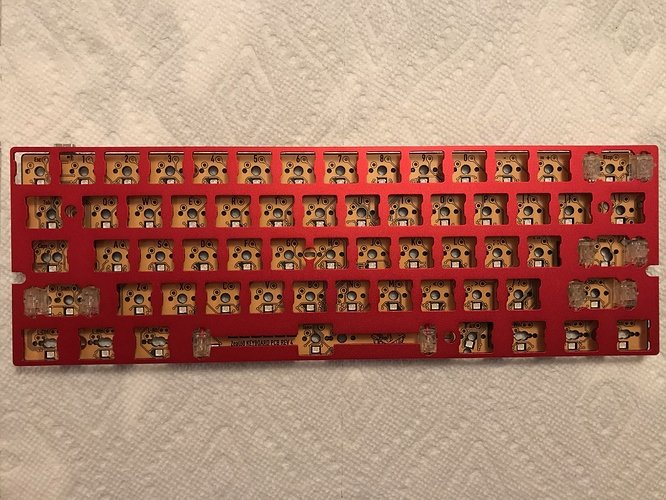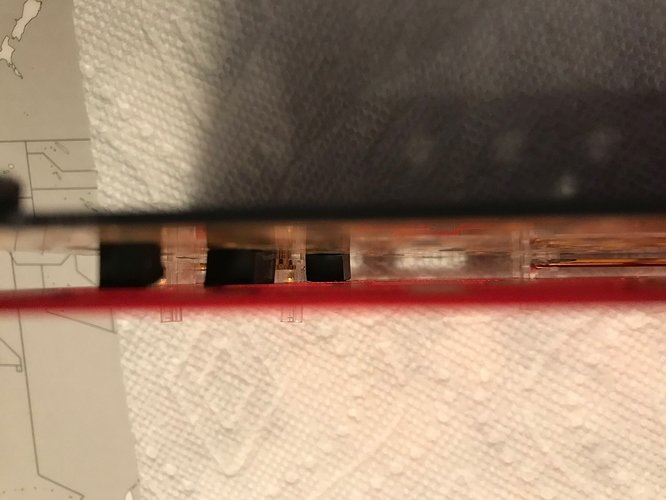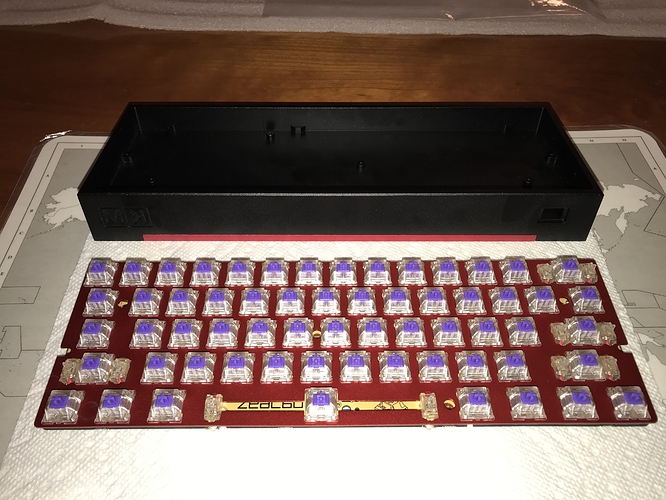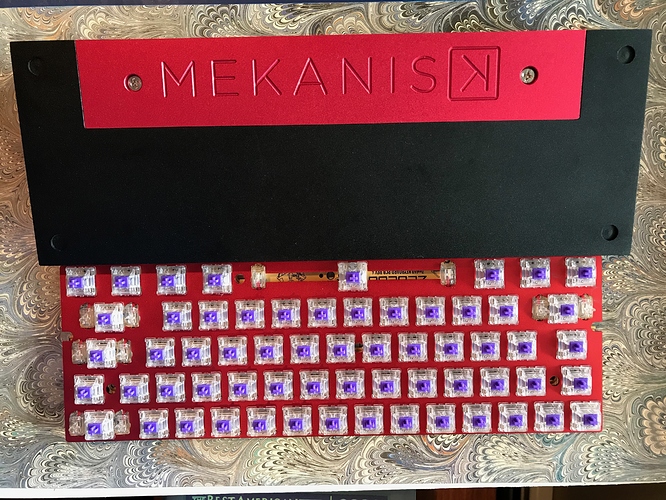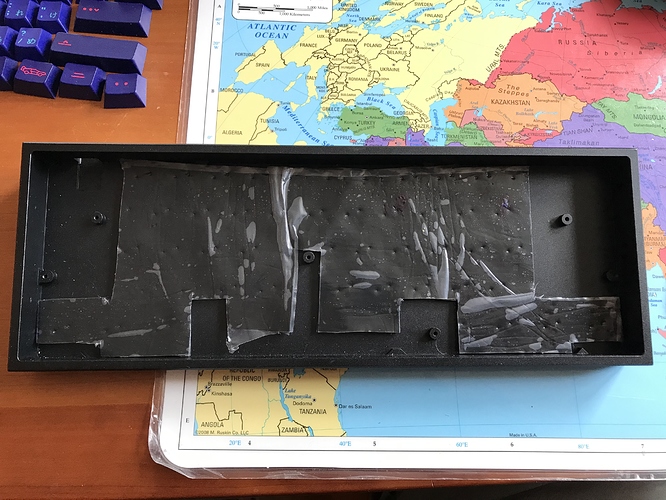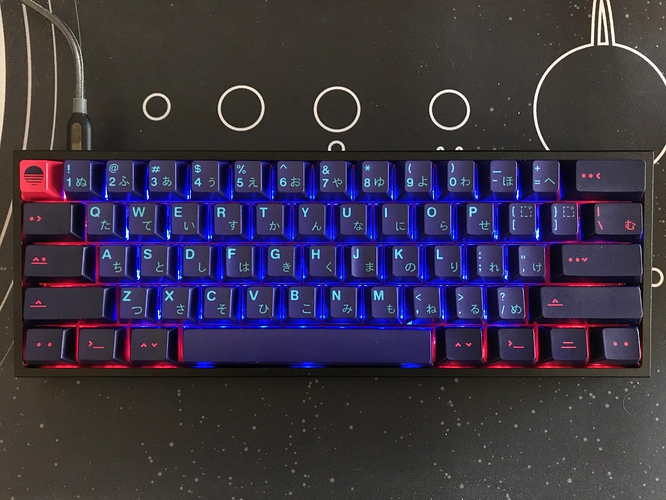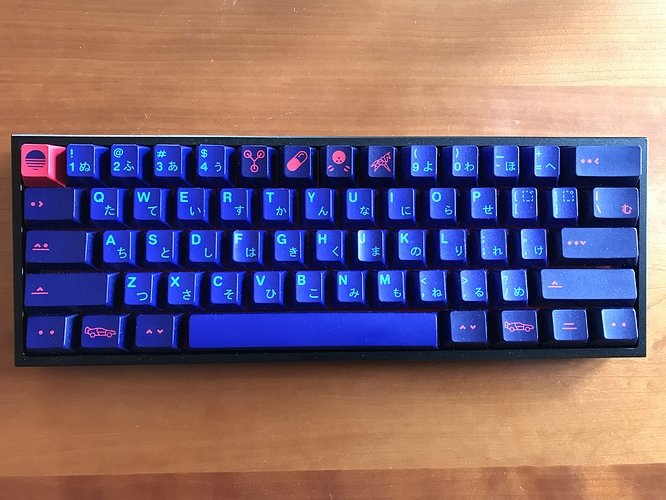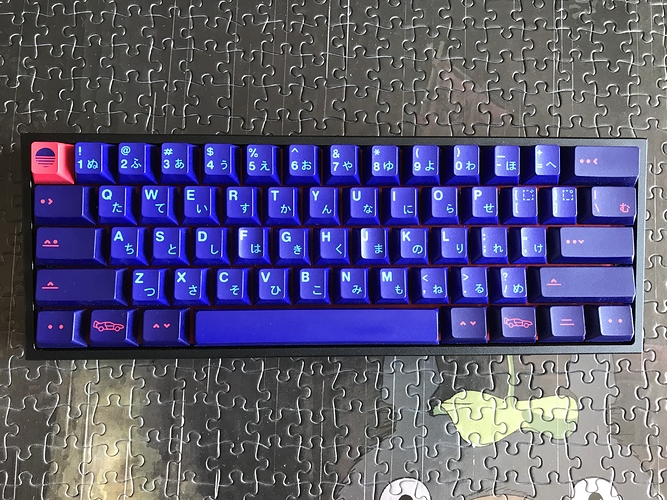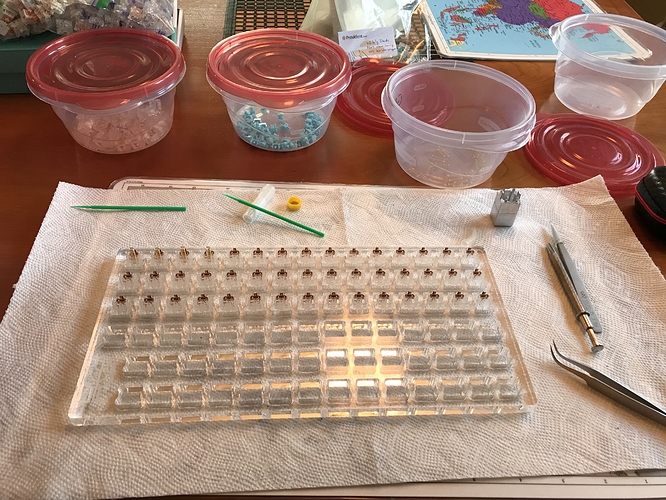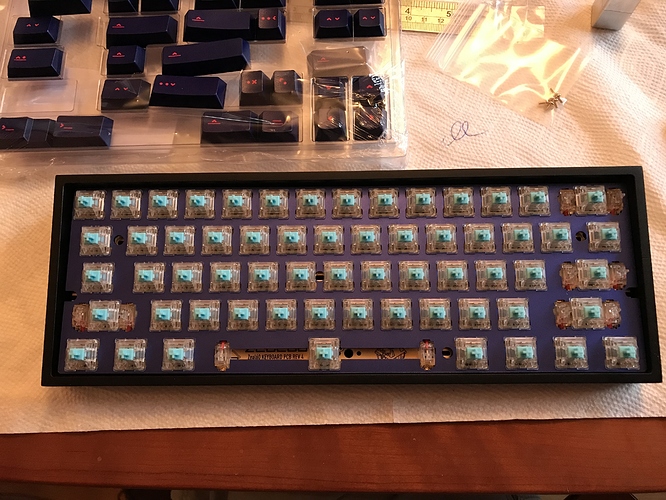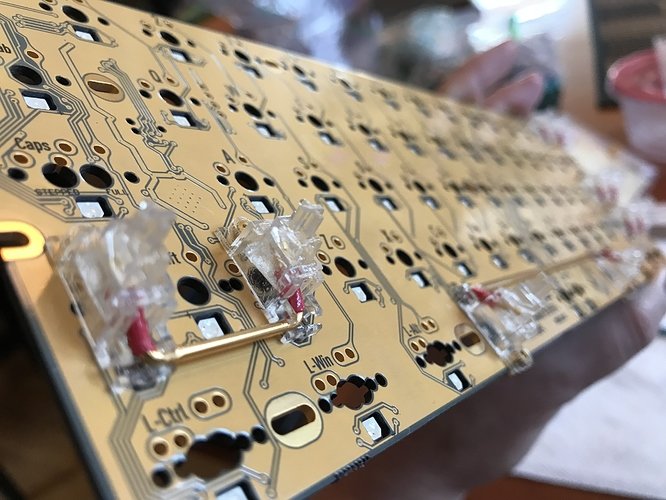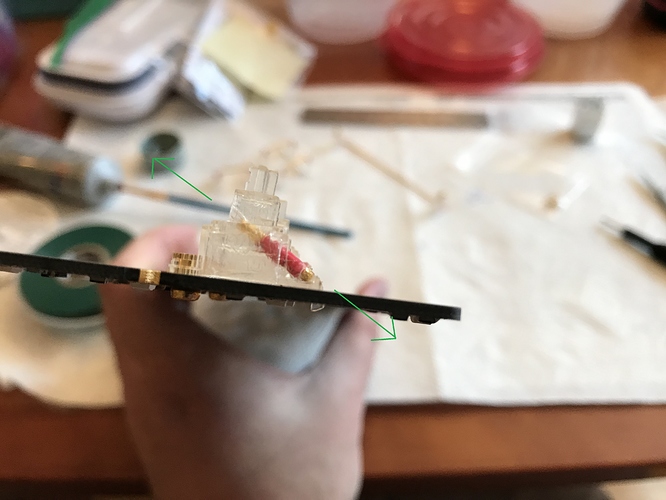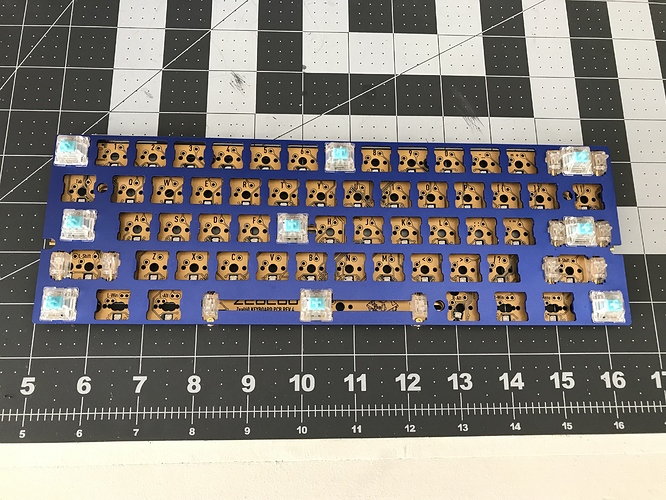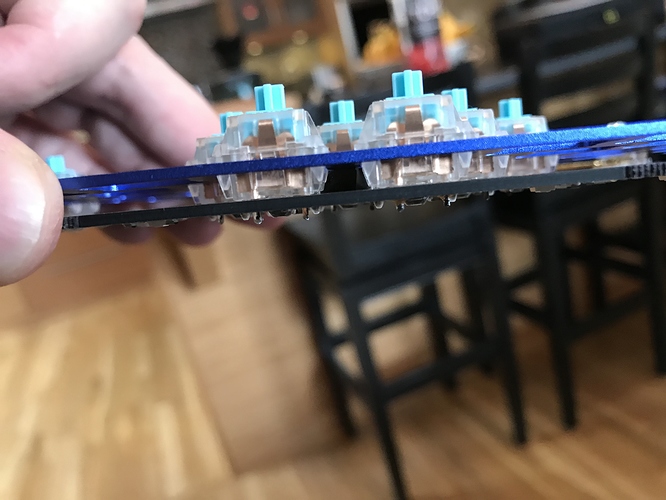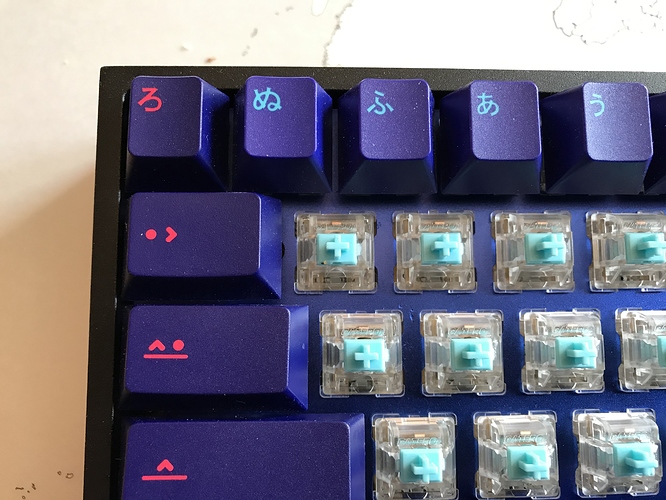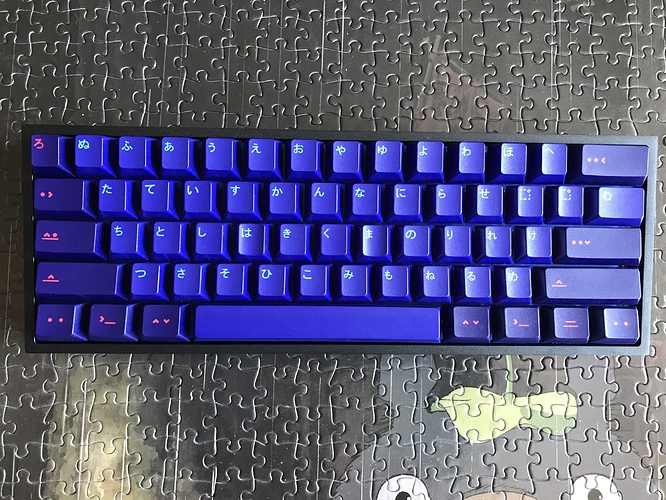Build #19: Norbatouch Pi Aerospace Aluminum
Let’s suppose that in some hypothetical timeline, apart from our own, a well-known fruit-named computer company had made some slightly different design choices for its hardware offerings. Let’s suppose that instead of pursuing a relentless and misguided march towards a featureless plane as the platonic ideal for text input, this company instead acknowledged that its users have fingers, and those fingers (and the minds that guide them) react positively to texture, to feel, to tactile feedback. In this alternate history, imagine that function remains at least competitive in the race towards form. What would the keyboard produced by this company, in this timeline ever so slightly displaced from our own, have looked like?
Perhaps it might have looked like the keyboard in this build log. You be the judge.
Let’s start by introducing the raw materials for this build as they arrive in pre-op - a CoolerMaster MasterKeys Pro S keyboard, which will be donating its PCB and plate for transplant into a Norbatouch Pi, fresh from group buy.
The Norbatouch housing can accept three discontinued CoolerMaster TKL models: the Novatouch, the Rapid-i, and the MasterKeys Pro S. Of these, the Novatouch has been the most popular choice to receive the Norbatouch treatment, as it offers Topre switches with MX-compatible sliders. Because of that combination of features, however, and the ability to harvest the board’s infamous purple sliders for other Topre builds to enable MX keycap compatibility, its price on the secondary market is skyrocketing. The MasterKeys Pro S is the easiest to find and cheapest to purchase, so if we’re willing to do the necessary surgery on the MasterKeys, it can serve as a good base for the build.
And surgery will be necessary. As is typical of OEM boards, the stabilizers are loud and rattle with every keypress, so we’ll need to mod and/or replace the stabilizers. The MasterKeys Pro S line uses Cherry switches, and this particular donor board has Cherry Blues, so we’re going to have to desolder the board to put new switches in. Finally, to even accomplish either of these improvements, we’ll first need to disassemble the MasterKeys Pro S.
Disassembling a MasterKeys Pro S
The patient is ready.
After removing the keycaps, we get our first look at the plate for the board. It’s an aluminum plate, with
plate-mount stabilizers.
Flipping the board over, we can begin disassembly. There are four screws to remove, two of which are visible (green arrows), and two of which are hidden under stickers (red arrows).
Next, we have to separate the top and bottom halves of the case. The two halves of the plastic case are held together by little tabs along the inside of the seam between the halves. To separate the halves, I used an old credit card wedged into the seam along the back of the case, and worked the card along the seam to pop the tabs out of their holes.
Eventually, once you’ve separated the two case halves along the back, you can gently apply force (and more prying with a credit card) to separate the halves along the other three case sides. To give you some idea of what you’re prying apart, here’s a look at the tabs on the inside edge of the top half of the case.
Next, there are two screws attaching the PCB/plate assembly to the bottom half of the case.
Once those two screws are removed, you can now separate the PCB/plate assembly from the bottom half of the case, but be careful - the USB cable port is still attached to the bottom half of the case by two more screws, which you will also have to remove.
At this point, we’re left with just the PCB/plate assembly, and there are no more screws to remove…
…but there is one last gotcha (after desoldering switches, which we’ll talk about in a moment). On the underside of the plate, there is a metal alignment pin, right next
to the Enter key cutout, that slides into a hole on the PCB. To separate the plate from the PCB, I found I had to rotate the PCB slightly, gently bending it just a little bit so that it would clear the flanged edges of the plate. Here’s what that alignment pin looks like, once you get the plate removed:
Finally, we’ve got the plate and PCB apart!
Desoldering
Before we begin desoldering switches, it’s worth taking a look around the PCB, to identify any potential trouble spots where we might need to exercise extra caution. There was one area that concerned me, right next to the connector for the USB cable (highlighted below with the red circle). The solder joints for this switch sit right next to two solder pads that aren’t connected. We’ll want to be sure that when we solder a new switch into this location, we don’t bridge those pads to the new solder joints.
While we’re inspecting the PCB, there is one more issue I want to highlight. Although it’s not a desoldering issue, and it’s not an issue we need to worry about for this build, it is an issue worth considering for anyone attempting to renovate a MasterKeys board. The MasterKeys PCB has north-facing switch LEDs:
This means that the switches will be oriented “upside-down” relative to their usual orientation.
GMK keycaps will impact north-facing housings on key presses, interfering with both feel and sound.
In the event you want to use GMK keycaps with north-facing switches, the current best solution
is to place washers on the stems of the switches, elevating the keycaps just enough to avoid
impacting the switch housing.
Back to our regularly scheduled program. It’s time to desolder a bunch of Cherry Blues, and for that job, I use a Hakko FR-301 desoldering gun. Expensive, yes, but it makes very short work of a job like this. If you think you might be desoldering more than a small handful of times, I’d strongly recommend it.
If you invest in this tool, here’s a quick primer on the technique I use. I don’t claim this is the best or only way to use this soldering gun, just that it works for me.
- Set the temperature to 700F, and let the gun come fully up to temperature before using it. You want to work quickly at this temperature to avoid damage to the PCB, but this temperature also allows you to remove solder quickly.
- I place the tip of the gun on the switch pin and bring it down over the pin to make contact with the solder. As soon I see the solder “give way”, usually a fraction of a second after contact, I immediately trigger the vacuum, working the tip on the gun gently in a circular motion to “mop up” solder, and then pull the gun away. The entire process from first contact to removal of the gun, at this temperature, is no more than three seconds.
- Clean the tip of the gun periodically, just as you would clean the tip of your soldering iron.
- If you find that the suction is not working well, there are three likely causes.
- The suction chamber has filled up with solder. You’ll need to remove the chamber once the solder has cooled down, and pry the solder chunks out of the chamber. I find that it’s best to clean out the chamber every time I get ready to use the gun, before I have turned it on. Ever used a vacuum to clean your rug? Same maintenance idea - you’ll get better suction if the chamber is empty.
- The chamber is not seated properly in the top of the gun. Both ends need to be properly seated for good suction to be produced.
- The little white pad at the butt end of the chamber is completely covered with solder dust and grime, and needs to be replaced.
- Sometimes, even after desoldering, a switch doesn’t want to come out easily. In this case, don’t apply force - you can easily damage the PCB. The likely cause is that a bit of solder is still attaching the switch to the PCB. In this case, the solution is counterintuitive, but it really works - add new solder and redo the solder joint, and then apply the desoldering gun again on the new joint.
- Use the included wire to clean out the desoldering gun nozzle before it cools down and you store it, and do this every time you’ve finished a session with the gun. This helps to prevent any buildup of solder residue inside the nozzle.
- Be aware that all solder is not created equal. In this particular case, the difference in cleanliness and flow between the OEM solder and the new Kester 63/37 solder I used was significant - the latter flowed much more cleanly, and desoldered much more easily.
Goodbye, Cherry Blues.
Switches and mods
To replace the clickies, I opted for silent tactile switches, the V2 Zilents. It’s worth noting at this stage that the Zilents have clear housings, which is relevant if you care about the built-in per-key RGB supported by the MasterKeys RGB PCB (I’ll also note in passing that the MasterKeys Pro S comes in two models, one with per-key RGB, and one with per-key white LEDs). Here are the switches after disassembly, in preparation for lubing.
Using a dental applicator, I applied Tribosys 3204 to the housing rails and the stems. I don’t apply any
lube to the stem legs with the bump, to avoid losing any of the tactility. For the springs, I tub lube with Krytox GPL 104, about 1 drop per 6 springs, and give it a good 2-3 minute shake, using tweezers to remove the springs when I’m done. If you tub lube, note that as you remove springs from the tub, you’ll eventually reach a point where your tub contains only intertwined springs. Be gentle when you separate the springs, and remember that tweezers are your friends.
After reassembling the switches, there’s one last task we have to do to ready them for installation and soldering. The MasterKeys PCB does not have mounting holes for the plastic switch pins, so in order to use Zilents, which do have these pins, we’ll have to clip the pins off, flush to the switch housing to ensure that the switches will sit properly on the PCB. Flush cutters are essential for this task. Here’s a before-and-after shot of one Zilent switch - the pins sit on either side of the central mounting post in the first picture, and have been removed with flush cutters in the second picture.
Stabilizers and mods
The OEM plate-mount stabilizers that came with the CoolerMaster were rattly, and lubing wasn’t going to be sufficient; part of the rattle was due to a loose fit on the plate. To resolve that, I switched to GMK plate-mount stabilizers, which had a tighter fit on the plate.
For plate-mount stabs, I used the same methods I employed with the Phantom build - I clipped all four legs of each stab stems, lubed the stab stems, housings, and wires, and performed the @walkerstop O-ring mod. I find that with plate-mount stabs, the O-ring mod is essential to address upstroke noise, and as with the Phantom build, it made a huge difference here. The reason I know it made a huge difference is that I first tried both the OEM and the GMK stabs without that mod, and the upstroke noise was quite harsh, particularly for the spacebar. With the O-ring mod in place, there is no upstroke noise. It’s magical. I really wish GMK screw-in stabs had the same internal geometry as the plate-mount stabs, because I would love to apply this mod on those stabs as well.
It’s not clear to me that there is any stab impact on the PCB when plate-mount stabs are used, but out of an abundance of caution, I used gaffer tape for a bandaid mod. I will say that if you’re doing the bandaid mod, it’s quite convenient when the PCB has graphics showing exactly where the switches and stabilizers sit.
PCB/plate dampening
After placing a few switches at the corners of the plate and at a few locations in the interior of the board, and double-checking to make sure everything was seated and aligned properly, I soldered them in place. This is a good time to address sound dampening for the plate, while we still have access to the gap between the plate and PCB.
In the past, I’ve used thin strips of Sorbothane, placed between the plate and PCB along the gaps between switches, to dampen plate ping. This has worked, but in the past I’ve done this before any soldering takes place. Sorbothane works best under a bit of compressive load, but that’s problematic, since the same load makes it difficult to get switches properly seated on the PCB for soldering when the Sorbo is “pushing back” as you try to solder. I used this build as an opportunity to try @donpark’s Sorbothane strut mod, which involves pressing small pieces of Sorbothane into the gap between the PCB and plate after a few switches have been soldered in.
After cutting a few very small squares of Sorbothane, as in the picture above, I used tweezers to push them into place at various points between the plate and PCB, making sure that their placement would not interfere with switch installation. It’s almost impossible to see the Sorbo in pictures once it’s been installed, but trust me - it’s there, right underneath the plate. Here’s one example:
Doing the dampening in this way, it’s also easy to test the sound before and after the mod, by rapping the plate with your knuckle. In this case, putting 6-7 of these little squares in was enough to remove all of the ping and introduce a more bassy tone.
Once the Sorbothane struts are in, it remains to place and solder all of the remaining switches. With that task done, our PCB/plate assembly is now ready for the Norbatouch treatment.
Norbatouch installation
Because our hypothetical history is close to the real one, we’ll have to go with the “Aerospace Aluminum” finish. The top and bottom halves of the case are held together by eight screws. Also, gotta love the Pi.
Also, gotta love the little details - @Norbauer kindly includes extra bumpers and screws for assembly,
as well as extra wrenches. By the way, if you’ve been keeping the MasterKeys screws around for reassembly, no worries; you’re not going to need them anymore.
As with the Norbatouch R2.5 I covered in a previous build log, we’re going to want to apply a sound dampening treatment to the case. 0.1" Sorbothane wasn’t enough to make good contact with the underside of the PCB and the case, but stacking two layers was enough:
So, we need a bunch of 0.2" packets of Sorbothane. I quickly cut eight approximately-equal sized strips of 0.1" Sorbo, no need to get too fussy with measurements:
From there, I stacked the strips in pairs, removing the plastic backing from the sides that make contact with each other, while leaving the plastic backing on the other sides for the moment. This makes it easier to handle the Sorbothane while stacking.
And there we are, four packets of 0.2" Sorbothane. All that’s left is to peel the remaining plastic backing and wrap the stacks in gaffer tape.
Before we place the Sorbothane packets in the bottom of the case, we’ll first need to attach the USB connector to the case with two screws.
At this point, you can place the packets in the case. I’ve tried a few different arrangements, and haven’t noticed any difference in sound dampening quality. The only important thing is to be sure that you’re getting good contact with the underside of the PCB and the case. Here, I’ve opened the case back up to show the packets after they’ve spent some time under compression - you can see the switch pin indentations.
Once the packets are in place and the USB connector is screwed to the case, two more screws need to be installed to keep the plate from moving around, at least if you’re not using any case dampening material. I found that putting the screws in gave me a little better compression with 0.2" of Sorbothane, but I also found that because the screws are offset from the center of the case, screwing too tightly led to the Sorbothane pushing the lower half of the PCB/plate assembly upward to compensate for the pressure. You can see that effect in the photo below, on the right side of the case.
You can back off the screw tension up to a point to resolve that, but the recessed areas on the underside of the top of the case are only so deep, and eventually, if the screw isn’t tight enough, the top half of the case won’t seat cleanly on the bottom. If you’re using Sorbothane, or shelf liner, or some other dampening material, I’d recommend trying assembly with and without these two screws, to see which you prefer.
With the board assembled, it’s worth noting that you have one more choice to make. If you want to fully exploit the per-key RGB built into the MasterKeys PCB, you’ll have to use the CoolerMaster software to control the lighting behavior, as well as the “CoolerMaster” key commands, which are handled natively by the board’s hardware, but you’ll give up full board programmability if you choose that route. Conversely, if you want full programmability, you can use a Hasu USB-to-USB adapter to get the QMK features you know and love, except for lighting control, and except for control of the “CoolerMaster” key, for which keypresses are never passed to USB. Finally, if you’re feeling especially hardcore, it’s worth mentioning that there also exists a CoolerMaster Windows API for controlling the MasterKeys Pro S - but that software runs on the host, not on the keyboard, and requires you to write and compile code. Pick your poison.
References
It’s always nice when someone else has worked out the details for OEM disassembly. Here are the references I used for this project:
Lessons learned
- As expected, the Sorbothane strut mod worked well. 6 small pieces inserted into strategic points between the plate and PCB deadened nearly all of the plate ping, and installing these pieces after a few switches were already soldered in was a much easier process. Sorbothane packets between the PCB and case took care of all remaining metallic ping.
- 3203 is good lube, but I think I prefer 3204 on silent switches. 3203 seems to let more of the feel and sound of the switch come through, which isn’t necessarily what I’m after when I’m using silent switches. For pretty much the same reason, I suspect Christo 111 and 112 will probably not be ideal choices for silent switches either. As with all things feel-related, YMMV.
- For GMK plate-mount stabs, clipping all four legs, lubing, and O-ring modding are the way to go. The default CoolerMaster stabs were rattly and loose, even after clipping and ample lubing, and the first GMK plate-mount installation with only two legs clipped and no O-ring mods suffered greatly from upstroke clack. With all four legs gone and O-rings in place, the stabilized keys sound and feel much like all the others, which is exactly where we want to be.
- With the desoldering gun, it really wasn’t a big deal at all to rebuild the stabs a couple of times after the initial installation, to get things dialed in just right. Sure, it also helped that only the five stabilized switches needed to come off (plate-mount stabs FTW), but even so, the entire disassembly/O-ring mod/rebuild cycle took no more than an hour.
- It’s too bad that XDA is one of my least favorite profiles for typing, because it really does look nice on this board, and the XDA Oblique legends really do create nostalgia for the keyboards from an earlier era. So it goes. On the other hand, we did say this timeline was only slightly different from the original…
- For future Norbatouch + MasterKeys builds, it’s worth remembering that the PCB has north-facing switches, so GMK caps are going to require the washer treatment for the switch stems, at least if you want consistent feel and sound from row to row.
- The Norbatouch Pi housing is a worthy successor to the R2.5. The anodization on this case has a lovely, very fine light-reflecting grain that plays with the light in pleasing ways. Chamfering and corners are perfect. The screw hole tightness issue from the R2.5 build has been resolved; no problem with tolerances here. Finally, the inclusion of hex wrenches, extra screws, and extra bumpons is a small but welcome detail. It only remains to convince Ryan to use magnetic screws, and our work here is done!
To think that some people believe alternate timelines are nothing more than science fiction…
Specifications
donor board: CoolerMaster MasterKeys Pro S RGB
case: Norbatouch Pi (Aerospace Aluminum finish)
case dampening: 0.1" 40 Duro Sorbothane, stacked to 0.2", wrapped with gaffer tape
PCB: donor
plate: donor
LEDs: per-key RGB, integrated in PCB
plate/PCB dampening: @donpark Sorbothane strut mod, 0.25" 50 Duro Sorbothane
stabilizers: GMK plate-mount
stabilizer mods: clipped (all four legs), lubed with SuperLube,
O-ring modded, and bandaid-style mod with gaffer tape
switches: replaced donor Cherry Blues with 65g V2 Zilents
switch lubing:
- manually lubed housings/stems with Tribosys 3203
- tub lubed springs with Krytox GPL 104
keycaps: XDA Oblique
HxWxD (without feet or caps): 1.0"x14.63"x5.75"
HxWxD (without caps): 1.63"x14.63"x5.75"
HxWxD: 1.93"x14.63"x5.75"
assembled weight: 4.74 lb
